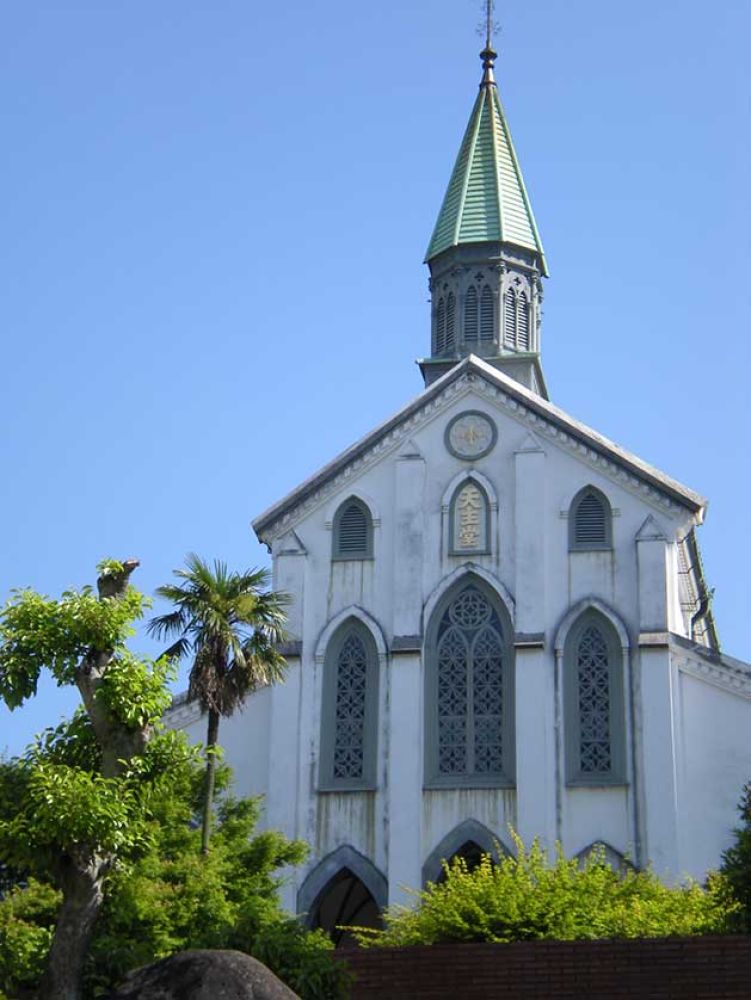

The Oura Catholic Church, formally known as the Church of the Twenty-Six Martyrs of Japan, stands as a beacon of Christian faith and history in Nagasaki. Its roots delve into the complex history of Christianity in Japan, a faith that has faced challenges and oppression since its introduction to the island nation by Jesuit missionaries in the mid-16th century.
Established in 1864 by a French priest named Bernard Petitjean of the Paris Foreign Missions Society, the Oura Catholic Church is a testament to the resilience of Christianity during a period when Christians were forced into hiding due to severe persecution. It was constructed in the Gothic style and later designated a National Treasure, reflecting both its cultural significance and architectural value.
The church’s most profound historical moment occurred shortly after its completion, when a group of Kakure Kirishitan ("Hidden Christians") from nearby Urakami revealed themselves to Petitjean. They had secretly maintained their faith for over two centuries, despite the ban on Christianity. This momentous event led to the recognition of the Hidden Christians and eventually, to the lifting of the ban on the religion in 1873.
Today, the Oura Catholic Church is not only an important place of worship but also a popular tourist attraction. Visitors come to admire its beautiful faç under the backdrop of lush green hills and to feel the weight of history within its walls. The church's recognition as a UNESCO World Heritage Site in 2018, as part of "Hidden Christian Sites in the Nagasaki Region," has bolstered its prestige and attracted an international audience interested in both religious heritage and human rights history.
Modern tourism trends indicate a growing interest in experiential and educational travel. Tourists visiting Oura Catholic Church often participate in informative tours, offering a deeper understanding of the site's significance and the history of Christianity in Japan. The church also caters to those seeking a spiritual experience, providing a serene environment for reflection and prayer.
The surge in mindful and sustainable travel has encouraged tourists to seek out destinations with cultural and historical importance, such as Oura Catholic Church. Furthermore, with the rise of social media and digital connectivity, many travelers are drawn to the church's picturesque views and unique narrative, often documenting their visits online and thus propagating awareness and interest.
In retrospect, the Oura Catholic Church stands as a symbol of peace and perseverance. As the face of tourism changes with the passing time, the church continues to welcome visitors from all over the world, inviting them to explore the rich tapestry of history woven into its grand structure and the story of faith that it quietly preserves.
Whether visitors are interested in the architectural splendor, the historical significance, or a moment of peace amidst their journey, the Oura Catholic Church in Nagasaki, Japan, offers a profound and moving experience that transcends the temporal boundaries of our ever-evolving tourism landscape.